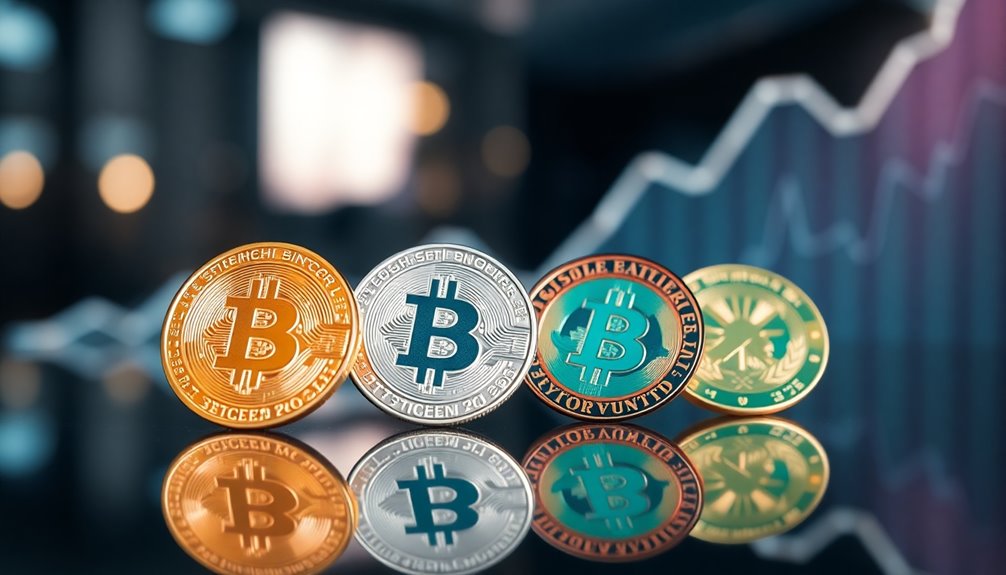The main difference between stop and stop-limit orders lies in how they execute trades. A stop order turns into a market order once it hits a specified stop price, ensuring execution but not guaranteeing the price. In contrast, a stop-limit order activates a limit order at the stop price, but it only executes if the limit price is met. This means you have more control over price with stop-limit orders, but you risk missing out on trades if the market doesn't reach your limit. Keep exploring to uncover more about when to use each order type effectively.
Key Takeaways
- Stop orders guarantee execution at the best available market price once the stop price is reached, while stop-limit orders require both stop and limit prices to be met.
- Stop orders may result in slippage, executing at prices worse than expected, whereas stop-limit orders provide price control but may not execute if the limit price is not reached.
- In volatile markets, stop-loss orders can execute significantly lower than the intended stop price, risking larger losses compared to stop-limit orders.
- Stop-limit orders can miss trading opportunities in fast-moving markets due to strict limit conditions, while stop orders ensure immediate execution regardless of price.
- The choice between stop and stop-limit orders should align with individual trading strategies and risk tolerance, factoring in current market conditions.
Order Types Explained

When you're trading, understanding the different order types is crucial for your success.
Stop Orders trigger a market order to buy or sell once a specified stop price is reached, ensuring execution at the next available market price but without a guarantee on the execution price. This is vital for loss prevention.
On the other hand, Stop-Limit Orders combine features of stop and limit orders, executing only if the stop price is hit and the execution price remains within a predetermined price. This method emphasizes price control, which aligns with your trading goals.
In volatile markets, knowing when to use each order type can enhance your risk management strategies and help you navigate fluctuations in market prices effectively.
Order Types Overview

Understanding the various order types available in trading is essential for maximizing your potential for success.
Stop orders trigger a market order to buy or sell once a specified stop price is reached, executing at the best available market price without guarantees on the execution price. In contrast, stop-limit orders combine a stop order with a limit order, executing only when the stop price is met and the price stays within a specified limit.
This offers more control but lacks execution guarantees. Both order types are vital risk management tools, helping you limit losses or protect gains.
Your choice between them should align with your trading strategy, balancing the need for price control against the certainty of execution.
Order Execution Mechanics Explained
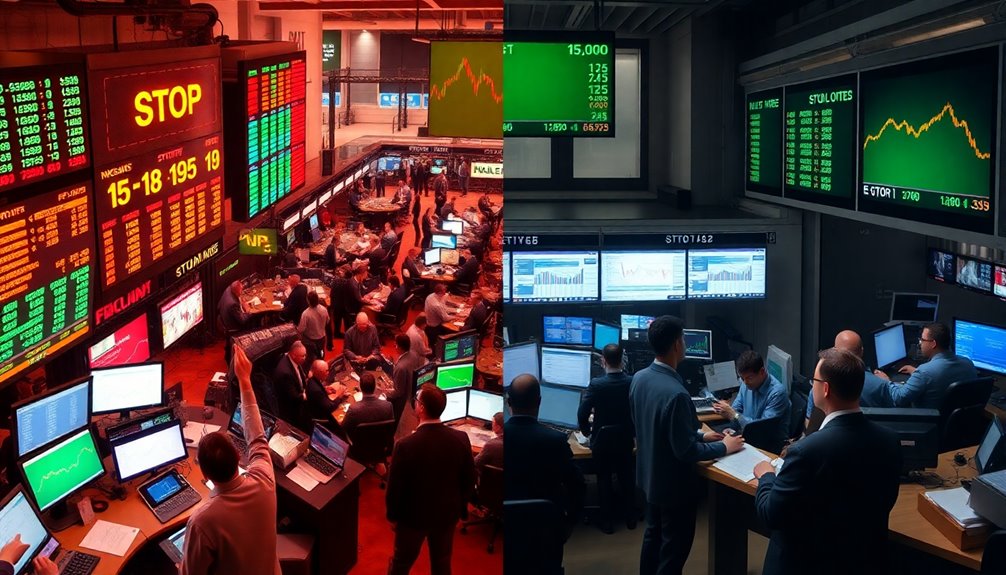
Order execution mechanics play a crucial role in how trades are carried out in the market, impacting your overall trading success.
Stop orders trigger a market order when your specified stop price is reached, executing at the best available market price, which may vary due to market fluctuations. This guarantees execution but not a specific price, potentially leading to selling stock at a lower price.
On the other hand, stop-limit orders activate a limit order once the stop price is hit, ensuring you control the execution price. However, there's a risk of non-execution if the market doesn't reach your limit price.
Evaluating your risk tolerance and market conditions is essential when choosing between these two order types.
Pros and Cons Summary
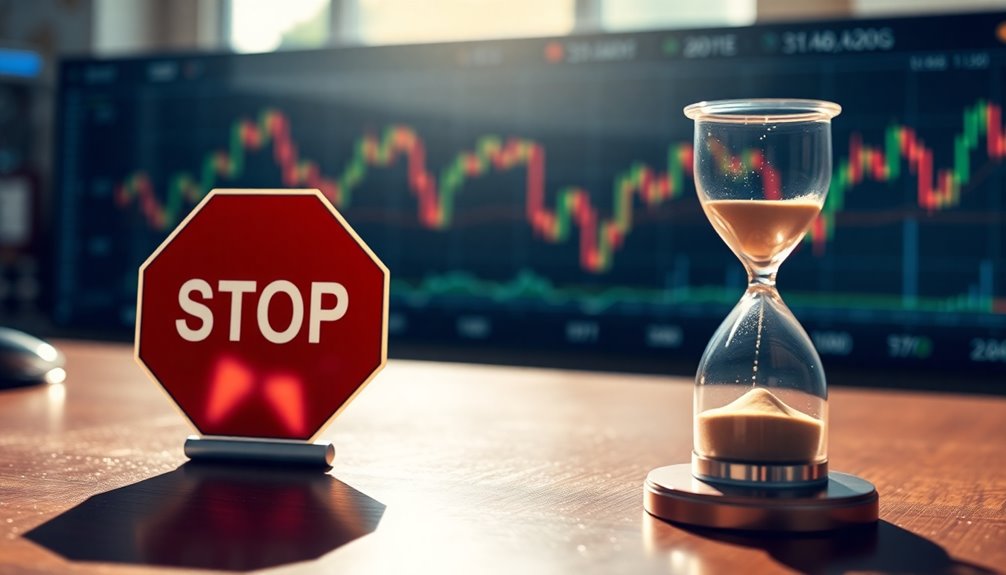
While both stop-loss and stop-limit orders serve to protect your investments, they each come with distinct advantages and disadvantages.
Stop-loss orders offer an execution guarantee, ensuring your trade goes through as soon as the stop price is hit, making them ideal for volatile stocks. However, they might execute at less favorable prices due to market conditions impact.
On the other hand, stop-limit orders provide price control, allowing you to set specific prices for entry or exit, but carry a risk of non-execution if the market doesn't meet your limit after the stop price is triggered.
This can lead to missed trading opportunities, especially in fast-moving markets. Choose based on your use cases and risk tolerance for controlled entry or quick exits.
Stop vs. Stop-Limit Mechanics
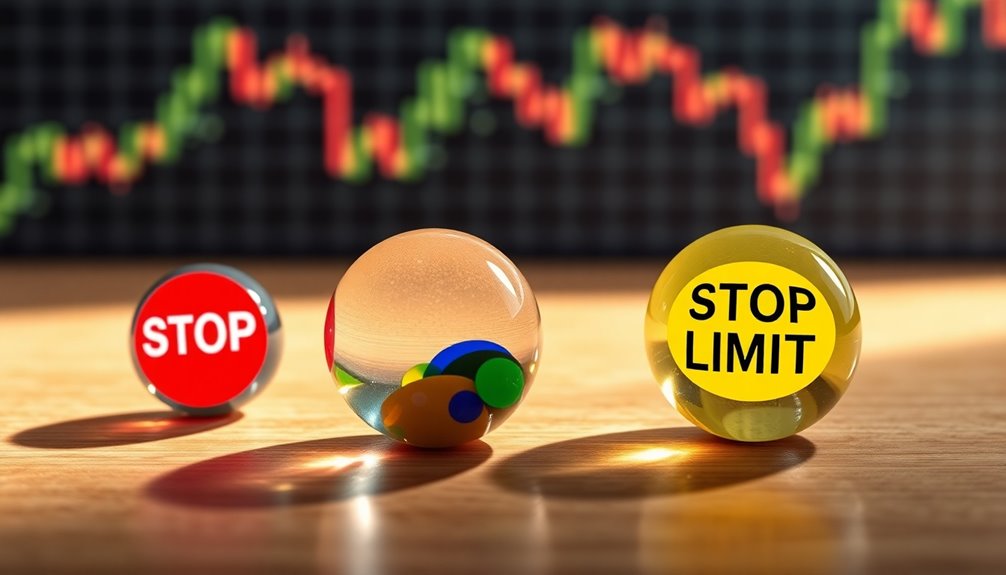
When a trader sets a stop order, it triggers a market order to buy or sell once the specified stop price is hit, ensuring quick execution without price guarantees.
In contrast, a stop-limit order combines a stop order with a limit order, allowing you to trade only at a predetermined limit price after reaching the stop price.
While stop orders prioritize execution, they may result in selling at significantly lower prices during high volatility.
Stop-limit orders, on the other hand, offer greater control over execution prices but risk non-execution if the limit price isn't met.
Understanding these mechanics helps you make informed trading decisions based on your preferences for speed versus price movement in volatile markets.
Market Volatility Impact
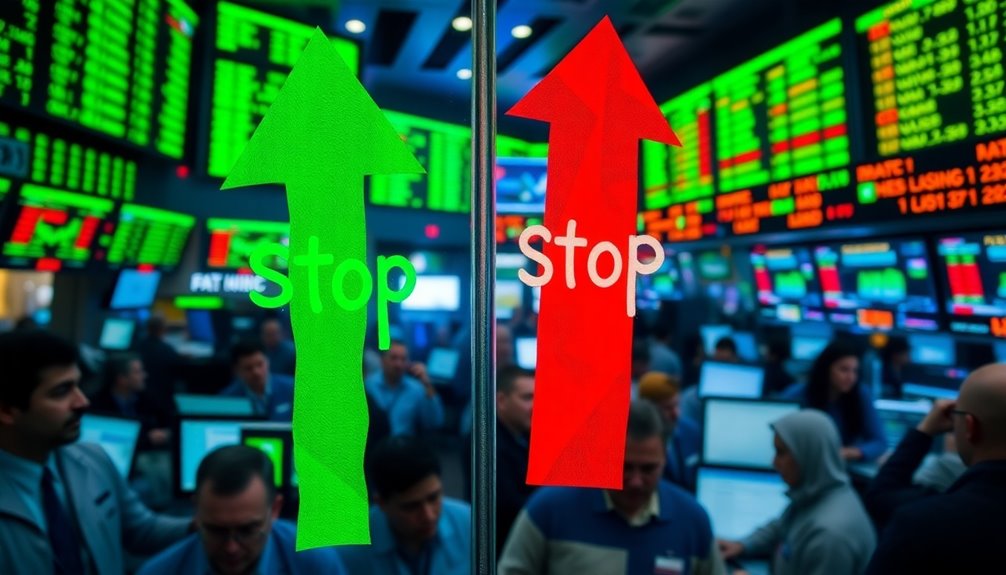
Market volatility significantly impacts how stop and stop-limit orders perform, especially during rapid price movements.
In a volatile market, a stop-loss order might execute at a price far lower than the stop price, leading to larger-than-expected potential losses due to slippage. Conversely, stop-limit orders offer price control but can fail to execute if the market price drops below your limit price after being triggered.
Gaps between trading sessions can exacerbate this issue, causing stop-loss orders to fill at unintended prices. Meanwhile, you could miss selling opportunities with stop-limit orders in a declining market, as they only execute within your specified limit price.
Understanding these dynamics is key to managing risk effectively in volatile conditions.
Algorithmic Trading Insights
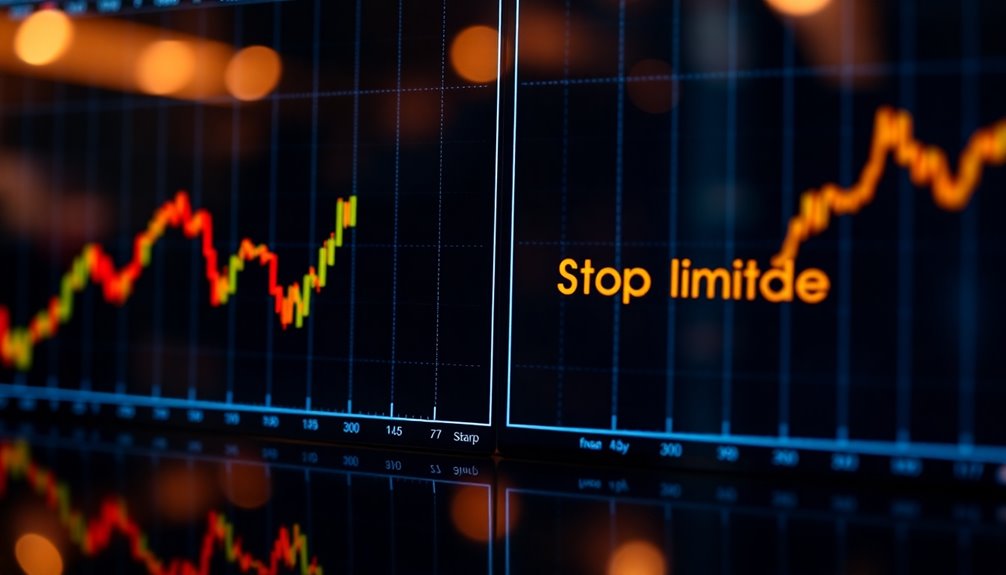
Algorithmic trading revolutionizes how traders use stop and stop-limit orders by automating execution based on predefined criteria.
In this dynamic environment, stop orders automatically convert to market orders when a specified stop price is reached, ensuring immediate execution without price guarantees. This can be crucial in fast-moving markets.
Conversely, stop-limit orders require both a stop price and a limit price, giving you control over execution price but risking non-execution.
Advanced algorithms optimize order placement by analyzing historical price movements and volatility patterns, enhancing risk management strategies.
Set Alerts for Price Changes
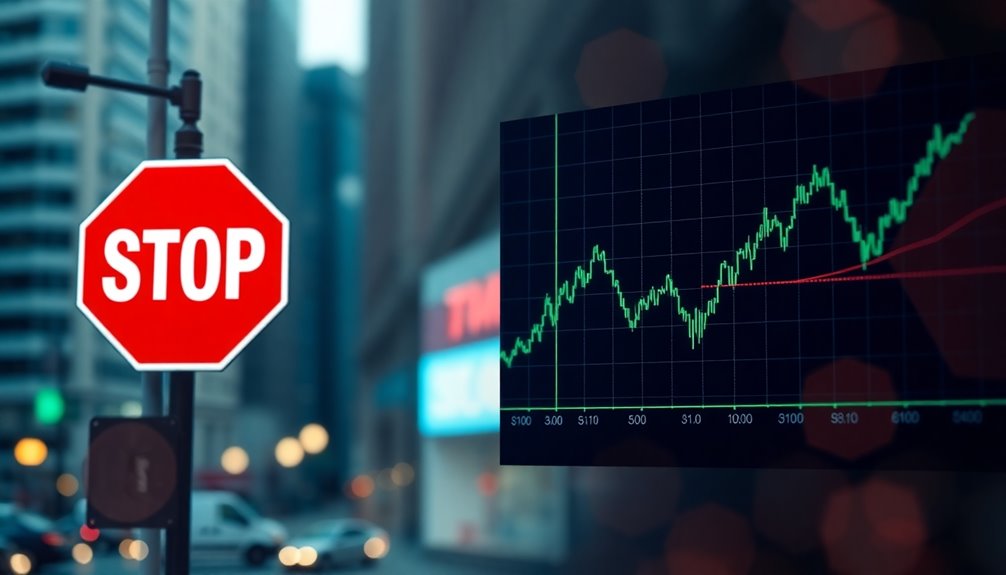
Traders can enhance their strategies by setting alerts for price changes, allowing them to stay on top of market movements without constant monitoring.
Price alerts notify you when a security hits your specified stop price, helping you make timely decisions. These alerts can be customized for various price levels, like support and resistance points, enabling quick action on market fluctuations.
When a price alert triggers a market order, it can identify potential entry or exit points based on your trading strategy. Most platforms offer customizable alert options, such as email or SMS notifications, ensuring you remain informed.
Frequently Asked Questions
Which Is Better Stop or Stop Limit?
When deciding whether a stop order or a stop-limit order is better for you, consider your trading strategy and market conditions.
If you prioritize execution and need to protect against losses quickly, a stop order might be your best bet.
However, if you want to control the price at which you sell and can handle the risk of non-execution, a stop-limit order could suit you better.
Your choice should align with your risk tolerance and market volatility.
What Is an Example of a Stop Limit?
Imagine you're navigating the choppy waters of the stock market, and you want to safeguard your treasure. A stop-limit order can be your lifebuoy.
For example, let's say you own shares priced at $60. You set a stop price at $55 and a limit price at $54. If the stock drops to $55, your order activates, but it'll only execute if it can be sold at $54 or higher.
What Are the Disadvantages of a Stop Limit Order?
When you use a stop limit order, you might face several disadvantages.
If the stock price moves quickly, your order mightn't execute, leaving you without a trade during vital moments.
Setting both a stop price and a limit price can confuse you, increasing the chance of making mistakes.
Plus, in volatile markets, your order could fail to fill even if the stop price is hit, potentially leading to greater losses than expected.
Can You Have a Stop and Limit Order at the Same Time?
Yes, you can have both a stop order and a stop-limit order placed simultaneously for the same security.
This strategy allows you to adapt to different market conditions effectively.
With a stop order, you'll trigger a market order once the stop price is reached, while a stop-limit order ensures execution at your specified limit price.
By using both, you can manage risks and protect your investments more efficiently.
Just remember to monitor them closely!
Conclusion
In the world of trading, understanding the difference between stop and stop-limit orders can be your lifeline in turbulent waters. While stop orders can execute quickly in a volatile market, stop-limit orders give you more control, albeit with the risk of missing out if prices swing unexpectedly. Ultimately, knowing how to navigate these tools helps you steer your ship through the storm, ensuring you make informed choices that align with your trading strategy.





